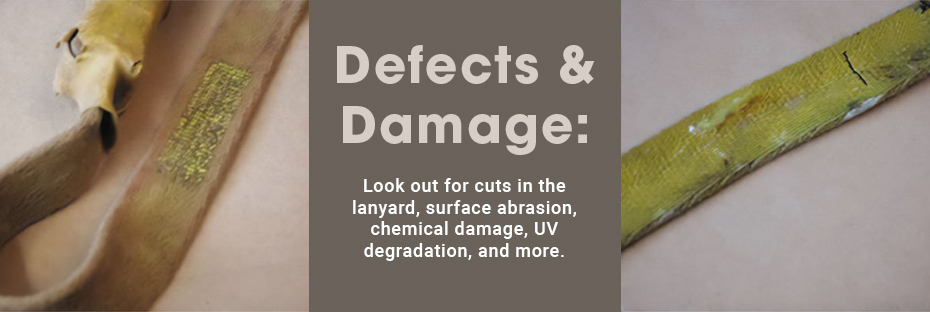Abtech Safety are committed to offering more than just certified high-quality safety solutions; we're here to empower you with knowledge that ensures the lasting quality and peak performance of our products. Let's dive into a crucial component of fall arrest systems: energy-absorbing lanyards. In this post, we'll break down the essentials of lanyard care.
Ensuring The Longevity and Safety of your Fall Protection Lanyards
In this post, we are focusing on an essential piece of fall arrest equipment - energy-absorbing lanyards. We'll cover the basics of what you need to know about maintaining, inspecting, and understanding the lifespan of lanyards based on advice from the Health and Safety Executive.
Energy-absorbing lanyards are a critical component of a fall arrest system. They connect a full-body harness to an anchorage point with an inbuilt device that reduces the impact of a fall. Their purpose is to save lives but to serve this purpose effectively, they need proper maintenance and regular inspections.
Here are the important factors to consider for the care of lanyards:
-
Recognise the Causes of Degradation
From general wear and tear to exposure to ultraviolet light and chemicals, many factors can lead to the degradation of synthetic fibres used in lanyards. A mere 1mm cut can result in a 5 to 40% loss of strength depending on the make of the lanyard. Therefore, regular and efficient inspection is essential.
-
Understand Legal Requirements and Standards
The Personal Protective Equipment at Work Regulations 1992 (as amended) and the Work at Height Regulations 2005 have set standards for maintaining fall arrest equipment. Abiding by these laws not only ensures the safety of workers but also reduces potential legal issues. Refer to the BS EN 365:2004 standards for detailed instructions on the use, maintenance, and examination of equipment against falls.
-
Implement an Effective Inspection Regime
An inspection regime is a protocol put in place to ensure that lanyards are in the best possible condition for use. It involves regular inspections carried out by competent persons and steps to be taken when defective lanyards are found.
- The inspection regime should cover:
- Lanyards to be inspected
- Frequency and type of inspection
- Competent persons carrying out the inspections
- Action to be taken upon finding defective lanyards
- Means of recording inspections
- User training
Download: Webbing Goods Inspection Sheet
-
Know When To Withdraw Lanyards From Use
Lanyards should be removed from use if they show signs of significant wear or damage, or if they have been used to arrest a fall. Also, lanyards should be withdrawn from use if there is no evidence of an inspection by a competent person within the last six months.
Abtech Safety also offers a range of lanyards for use in the event a defective lanyard is required to be replaced.
-
Learn About Potential Defects and Damage
Understanding what constitutes damage is crucial to maintaining safety. This could include cuts in the lanyard, surface abrasion, chemical damage, UV degradation, and more
Regular checks and inspections can help identify potential issues and resolve them before they lead to serious consequences. A well-maintained lanyard doesn't only save lives; it can also save time and money on replacements and legalities.


Remember, a lanyard is only as good as its maintenance. Stay safe with regular inspections and proper care of your lanyards.
For further reading, consult WAHSA’s Guidance on Inspecting Personal Fall Protection Equipment.
*Please note that the guidance above is generic and can also apply to non-energy-absorbing lanyards and safety harnesses. For product-specific inspection requirements, always consult the manufacturer or supplier.



